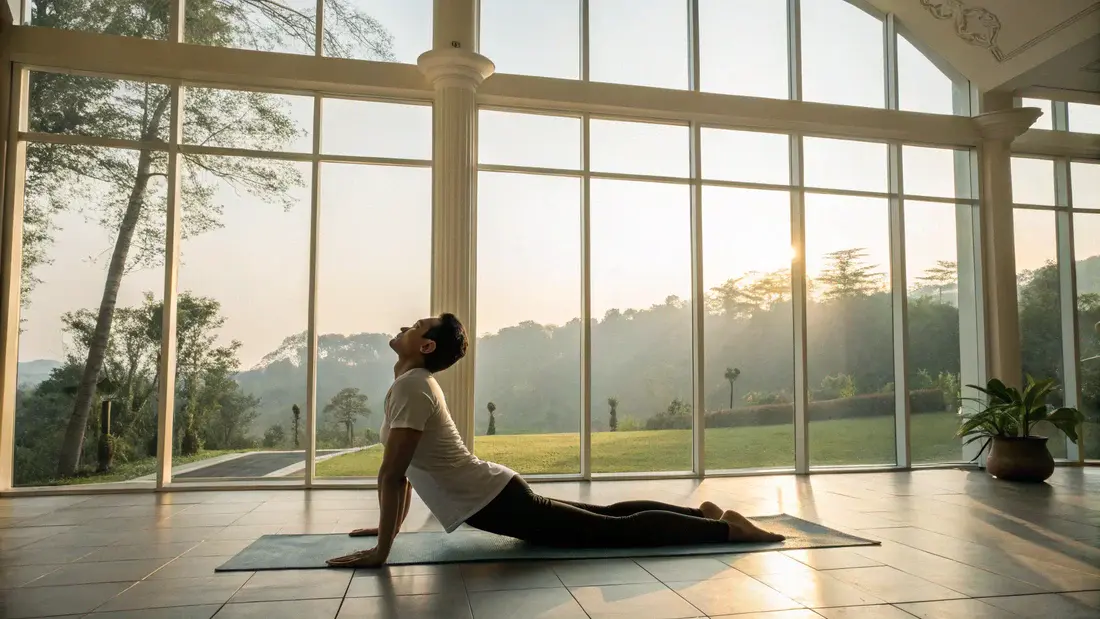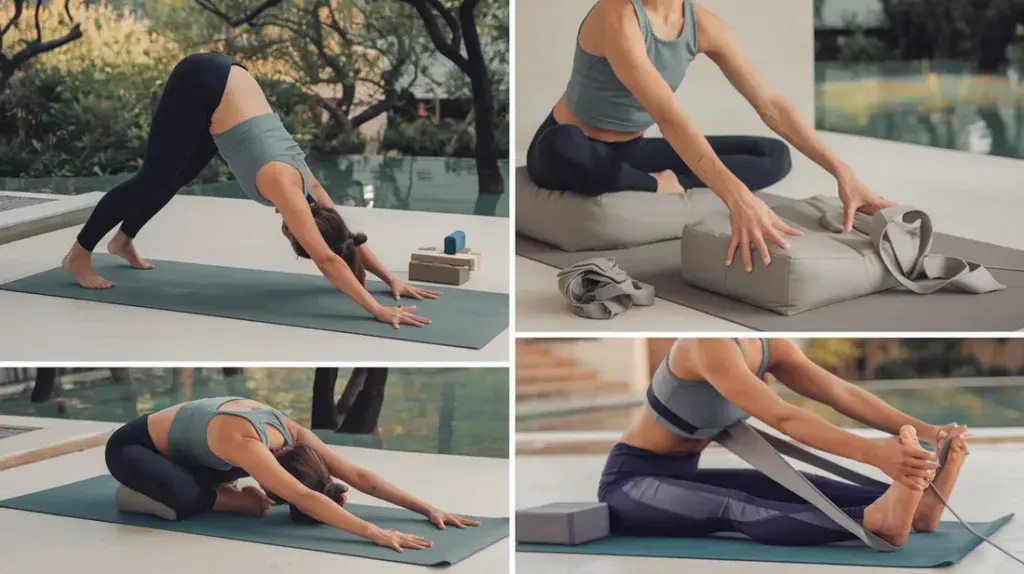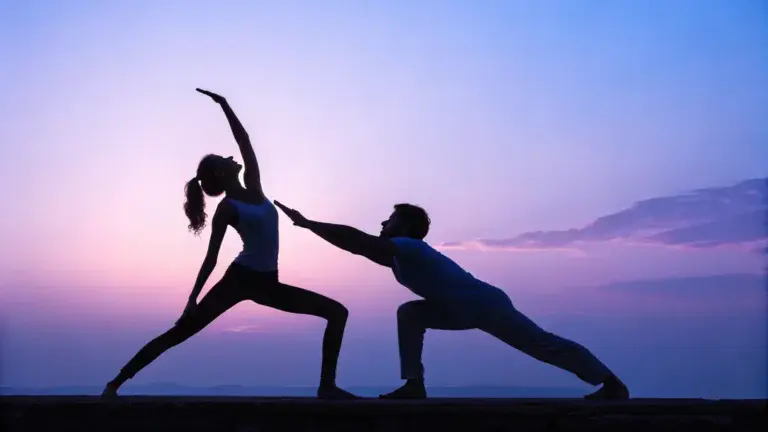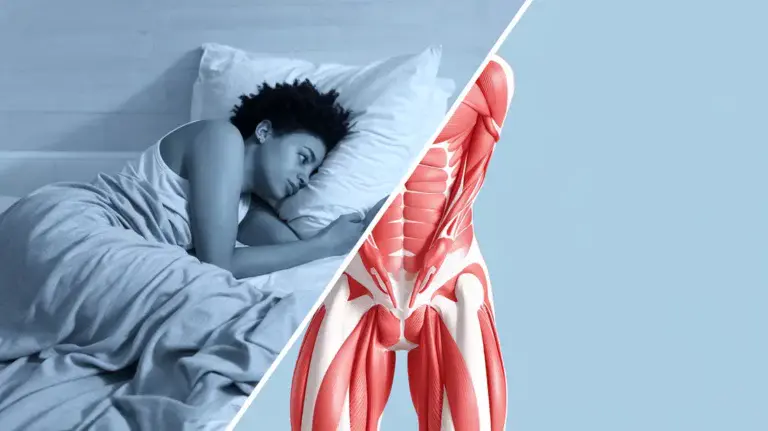Yoga for Tight Hip Flexors is a powerful and effective way to address a common issue that affects many individuals.
Do you ever find yourself struggling to touch your toes, experiencing a nagging ache in your lower back, or feeling tightness in your hips during your runs?

If so, tight hip flexors might be the culprit.
These crucial muscles play a vital role in our daily movements, from bending down to lifting our knees and even walking.
However, modern lifestyles, often involving prolonged sitting, can lead to them becoming shortened and tight.
Fortunately, yoga offers a fantastic array of poses that can release this tension, increase flexibility, and ultimately relieve pain.
This blog post will guide you through the top yoga poses to target your tight hip flexors and help you regain comfort and mobility.
What are Hip Flexors and Why Do They Get Tight?
Let’s delve a little deeper into what exactly the hip flexors are and why they tend to become so tight.
Defining Hip Flexors
The hip flexors are a group of muscles located at the top of your thighs, near your pelvis.
Their primary function is to flex the hip, which means bringing your knee closer to your chest.
The five major muscles that make up the hip flexor group include:
| Muscle Name | Description |
| Psoas Major | Connects the lower spine to the femur. |
| Iliacus | Located on the inside surface of the ilium (the large, flared bone of the hip). |
| Rectus Femoris | One of the four quadriceps muscles; it also crosses the hip joint. |
| Tensor Fasciae Latae (TFL) | Located on the outer side of the hip. |
| Sartorius | The longest muscle in the human body; it crosses both the hip and knee joints. |
The Importance of Healthy Hip Flexors
Healthy, flexible hip flexors are essential for a variety of reasons:
- Facilitate essential movements: They allow us to walk, run, climb stairs, and perform many other daily activities with ease.
- Contribute to proper posture and balance: They help maintain an upright posture and contribute to overall balance.
- Enable a full range of motion: They ensure a complete range of movement in the hips, crucial for activities and preventing stiffness.
- Support core stability: They work in conjunction with the core muscles to stabilize the torso.
- Influence squat depth: Flexible hip flexors allow for a deeper and more effective squat.
Common Causes of Tight Hip Flexors
Several factors contribute to the development of tight hip flexors:
- Prolonged sitting: Spending long hours sitting at a desk or driving can cause the hip flexors to shorten.
- Repetitive leg movements: Activities like running and cycling, while beneficial, can also lead to tightness if not balanced with stretching.
- Lack of regular stretching: Insufficient stretching and mobility work can result in stiff hip flexors.
- Poor posture: Slouching or having an anterior pelvic tilt can put extra strain on these muscles.
- Muscle imbalances: Weak glutes or core muscles can cause the hip flexors to overcompensate, leading to tightness.
Symptoms and Consequences of Tight Hip Flexors

Recognizing the signs of tight hip flexors is the first step towards addressing the issue.
Recognizing the Signs of Tightness
- Hip pain and stiffness
- Lower back pain and discomfort
- Knee pain
- Poor posture (often characterized by an anterior pelvic tilt, where the lower back arches excessively)
- Limited range of motion in the hips
- Difficulty extending the leg fully
- Feeling of tightness when standing up straight
- Inability to touch your toes without bending your knees
- Discomfort during everyday activities like walking or sitting
- A general feeling of restriction in the hip area
Potential Consequences of Untreated Tightness
Ignoring tight hip flexors can lead to several negative consequences:
- Inefficient running stride and reduced athletic performance
- Increased risk of injuries such as hip strains, hamstring tears, and lower back issues
- Stress on surrounding joints, including the knees and lower back
- Compensatory movements and muscle imbalances as other muscles try to take over the function of the tight hip flexors
Top Yoga Poses to Release Tension in Tight Hip Flexors
Yoga offers a gentle yet powerful way to stretch and release tension in the hip flexors.
Remember to warm up your body gently before attempting these poses and always listen to your body, avoiding any sharp pain.
Hold each stretch for approximately 30 seconds and repeat on both sides unless otherwise indicated.
| Yoga Pose | Description and Key Focus | Primary Hip Flexor Target(s) | Modifications for Beginners |
| Kneeling Hip Flexor Stretch | Start in a low lunge, then drop your back knee to the floor. Ensure your front knee is directly over your ankle. Gently press your hips forward. | Iliopsoas | Place a folded blanket under your back knee for cushioning. Keep your hands on your front thigh for support. |
| Low Lunge (Anjaneyasana) | From Downward-Facing Dog, step one foot forward between your hands, aligning your front knee over your ankle. Keep your back knee on the floor and lift your torso. | Front of the hip | Keep your hands on your front thigh instead of reaching overhead. Ensure your front knee doesn’t extend past your ankle. |
| High Lunge (Anjaneyasana) | Similar to the Low Lunge, but keep your back knee lifted off the floor, engaging your back leg. This intensifies the stretch. | Front of the hip | Start in a Low Lunge first to find your balance before lifting your back knee. Keep a slight bend in your back knee initially. |
| Couch Stretch | Place your shin and the top of your foot of one leg against a wall or couch, with your knee on the floor. Step your other foot forward into a low lunge. | Psoas, Rectus Femoris | Start with a shorter hold and gradually increase the duration. Place a cushion under your front knee if needed. |
| Lizard Pose (Uttanasana) | From Downward-Facing Dog, step one foot to the outside of your hand. Lower your forearms to the floor (or use blocks). Sink your hips lower. | Deep hip flexors, quads | Keep your back knee on the floor. Stay on your hands instead of lowering to your forearms. |
| Pigeon Pose (Kapotasana) | From Downward-Facing Dog, bring one knee towards the corresponding wrist and angle your shin towards the opposite wrist. Extend your other leg straight back. | Psoas, outer hip rotators | If your hip doesn’t reach the floor, place a block or cushion underneath it for support. Modify by lying on your back and bringing one ankle to the opposite knee (Figure Four stretch). |
| Bridge Pose (Setu Bandhasana) | Lie on your back with knees bent and feet flat on the floor, hip-width apart. Lift your hips off the floor, engaging your glutes. | Front of the hips | Keep your neck relaxed and look straight up. Don’t lift your hips as high for a gentler version. |
| Supine Hip Flexor Stretch | Lie on your back with both legs extended. Hug one knee into your chest and actively press the other leg down. | Iliopsoas | Use a strap around your foot on the extended leg to help keep it straight. |
| Happy Baby Pose (Ananda Balasana) | Lie on your back and bring your knees towards your chest. Grab the outsides of your feet and gently pull your knees down towards the floor. Keep your tailbone down. | Inner thighs, hips | If you can’t reach your feet, grab your ankles or shins. Gently rock from side to side to deepen the stretch. |
| Camel Pose (Ustrasana) | Kneel with your knees hip-width apart and your feet flat on the floor. Place your hands on your lower back, fingers pointing down. Lean back, lifting your chest. | Deep hip flexors, chest | Keep your thighs perpendicular to the floor. If reaching for your heels is too intense, keep your hands on your lower back for support. |
| Standing Hip Flexor Stretch | Stand tall and step one leg slightly behind you. Bend your front knee and gently tuck your tailbone under, pressing your hips forward. | Iliopsoas | Hold onto a chair or wall for balance if needed. |
| Active Hip Flexor Stretch | Stand tall and lift one knee towards your chest, actively engaging your hip flexor. Lower the leg slowly. Add a gentle backward extension. | All hip flexors | Focus on controlled movement and engaging the muscles. |
| Warrior Poses | Deep bend in the front knee with back leg extended. | Front of the back hip | Ensure your front knee is aligned over your ankle. Maintain a strong and stable stance. |
| Garland Pose | Squat with your feet slightly wider than hip-width apart, toes pointing slightly outward with pressure and the body weight slightly leaning forward | Groin and hips | Ensure that the hips have enough movement to stretch to avoid causing injury and having a wider stance may ensure this. |
Benefits of Regular Yoga Practice for Hip Flexibility and Pain Relief

Incorporating these yoga poses into your regular routine can bring about significant improvements:
- Releasing Tension: Yoga effectively targets the psoas muscle, often referred to as the “muscle of the soul,” and other hip flexors, helping to release deeply held tension.
- Increasing Flexibility and Mobility: Consistent practice gradually increases the range of motion in your hips, making everyday movements easier and more comfortable.
- Relieving Hip, Back, and Knee Pain: By releasing tightness in the hip flexors, you can reduce strain on the interconnected muscles and joints, alleviating pain in the hips, lower back, and even knees.
- Improving Posture: Releasing tight hip flexors can help correct anterior pelvic tilt, leading to better spinal alignment and overall posture.
- Enhancing Athletic Performance: For runners and other athletes, improved hip flexor flexibility can lead to a more efficient stride, increased power, and a reduced risk of injury.
- Promoting Overall Well-being: Beyond the physical benefits, yoga also promotes relaxation and stress reduction, contributing to your overall well-being.
Tips for Your Yoga Practice

To make the most of your yoga practice for tight hip flexors, keep these tips in mind:
- Listen to Your Body: Never push yourself into sharp pain. A gentle stretch is more effective than forcing a pose.
- Breathe Deeply: Focus on slow, deep breaths throughout your practice. Breath helps to relax the muscles and deepen the stretch.
- Be Consistent: Aim for regular practice, even if it’s just for a few minutes each day, to see the best results.
- Hold Each Pose: Hold each stretch for a sufficient duration (around 30 seconds) to allow the muscles to release.
- Consider Props: Don’t hesitate to use props like cushions, blocks, and straps to support your body and modify poses as needed.
- Combine with Strengthening: For a balanced approach, consider incorporating exercises that also strengthen the hip flexors and surrounding muscles, such as lunges and straight leg raises.
Frequently Asked Questions (FAQs)
Q: How often should I do yoga for tight hip flexors? A: Aim for at least 2-3 times per week. Even short, regular sessions can be beneficial.
Q: How long will it take to see results? A: This varies from person to person. Some may notice a difference within a few sessions, while others may take longer. Consistency is key.
Q: Can yoga completely fix tight hip flexors? A: For many people, yes. Consistent yoga practice, combined with addressing lifestyle factors like prolonged sitting, can significantly improve or resolve tight hip flexors.
Q: Are there any precautions I should take? A: If you have any pre-existing injuries or conditions, consult with your doctor or a qualified yoga instructor before starting a new yoga practice. Always listen to your body and avoid pushing into sharp pain.
Q: Can I do these poses even if I’m not very flexible? A: Absolutely! Many of these poses have modifications for beginners. Use props like cushions and blocks to support your body as needed. Consistency will gradually improve your flexibility.
Key Takeaways
- Tight hip flexors are a common issue caused by prolonged sitting, repetitive movements, and lack of stretching.
- Symptoms of tight hip flexors can include hip, back, and knee pain, poor posture, and limited mobility.
- Yoga offers numerous poses that effectively target and release tension in the hip flexors.
- Regular yoga practice can lead to increased flexibility, pain relief, improved posture, and enhanced athletic performance.
- Listen to your body, breathe deeply, and be consistent with your practice for optimal results.
Conclusion – Embrace Yoga for Healthy and Flexible Hips
Yoga offers a holistic and effective approach to addressing tight hip flexors.
By incorporating the poses outlined in this blog post into your routine, you can release tension, increase flexibility, and experience relief from associated pain.
Remember that consistency is key, and listening to your body is paramount.
Embrace the journey towards healthier, more flexible hips and enjoy the increased ease and comfort in your daily life.
Which of these yoga poses do you find most helpful for releasing tight hip flexors?
Share your experiences or ask any questions you may have in the comments below!
References
- Broad, W. J. (2012). The Science of Yoga: The Risks and the Rewards. Simon and Schuster. (Implied reference to yoga poses and benefits)
- Alter, M. J. (2004). Science of Flexibility. Human Kinetics. (Implied reference to flexibility and its importance)
- Kendall, F. P., McCreary, E. K., Provance, P. G., Rodgers, M. M., & Romani, W. A. (2005). Muscles: Testing and Function, with Posture and Pain. Lippincott Williams & Wilkins. (Implied reference to muscle function and pain related to tightness)
- Anderson, B. (2017). Stretching. Shelter Publications. (Implied reference to stretching techniques and benefits)
- McCall, T. (2007). Yoga as Medicine: The Yogic Prescription for Health and Healing. Bantam. (Implied reference to the therapeutic benefits of yoga)



